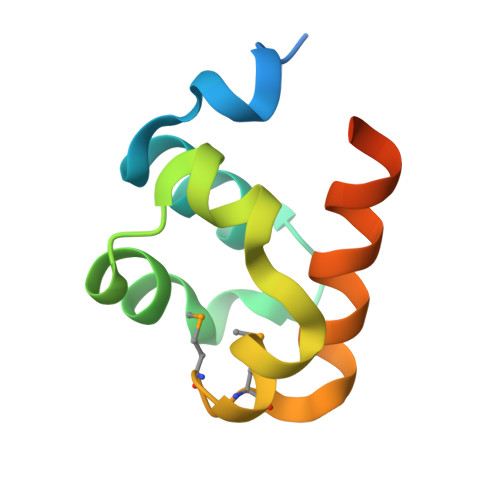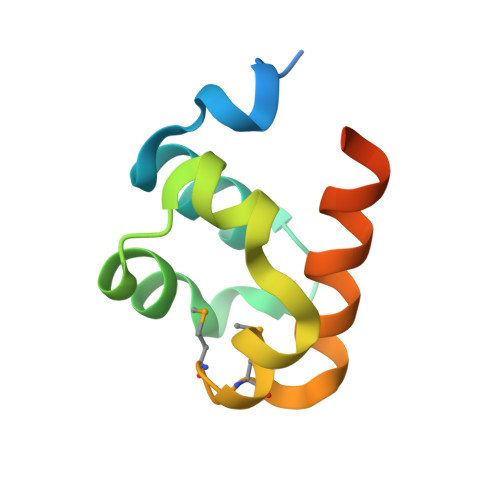The SAM domain of polyhomeotic forms a helical polymer.
Kim, C.A., Gingery, M., Pilpa, R.M., Bowie, J.U.(2002) Nat Struct Biol 9: 453-457
- PubMed: 11992127
- DOI: https://doi.org/10.1038/nsb802
- Primary Citation of Related Structures:
1KW4 - PubMed Abstract:
The polycomb group (PcG) proteins are important in the maintenance of stable repression patterns during development. Several PcG members contain a protein protein interaction module called a SAM domain (also known as SPM, PNT and HLH). Here we report the high-resolution structure of the SAM domain of polyhomeotic (Ph). Ph-SAM forms a helical polymer structure, providing a likely mechanism for the extension of PcG complexes. The structure of the polymer resembles that formed by the SAM domain of another transcriptional repressor, TEL. The formation of these polymer structures by SAM domains in two divergent repressors suggests a conserved mode of repression involving a higher order chromatin structure.
Organizational Affiliation:
Department of Chemistry and Biochemistry, Laboratory of Structural Biology and Molecular Medicine, Molecular Biology Institute, UCLA, 611 Charles E. Young Drive East, Los Angeles, California 90095-1570, USA.

















